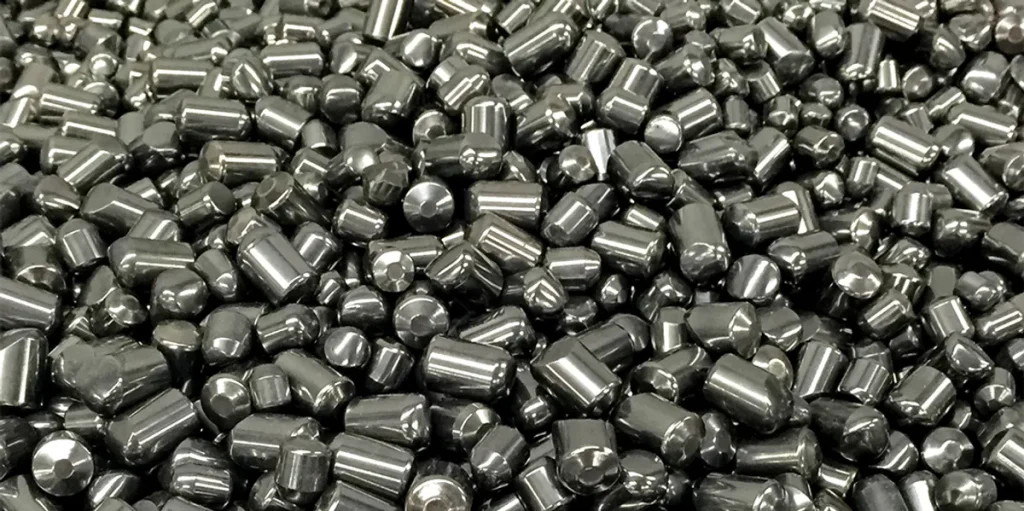Tungsten is rapidly gaining attention as a high-value strategic metal for its crucial role in national defense, aerospace and advanced manufacturing. However, as with most critical metals, the global supply chain for tungsten is dominated by a handful of producers, primarily China.
As governments race to secure domestic sources of critical minerals, tungsten’s scarcity and irreplaceability are driving renewed interest from investors seeking exposure to metals tied directly to security, technology and industrial resilience. This current landscape is creating a compelling early stage investment opportunity.
Strategic applications
Tungsten’s ability to retain hardness and strength under extreme thermal and mechanical stress make it difficult to substitute in mission-critical roles. In defense, tungsten heavy alloys and carbides are found in armor-piercing munitions, missile balance weights and components for military-grade steels. These are functions the US Government Accountability Office classifies as integral to weapons systems.
Beyond its military application, tungsten is relevant to several advanced-industry value chains. In aerospace, it stabilizes jet engine components exposed to immense heat; in electronics, its conductive and thermal properties support semiconductor fabrication and battery technologies. The growth of renewable energy, AI infrastructure and electrification continues to expand these uses, transforming tungsten into both a strategic and technology metal. The result is steady structural demand across cycles, a key factor for investors seeking resilience rather than speculation.
Market landscape and supply risks
China controls the vast majority of global tungsten mine output and downstream processing, leaving western economies exposed to policy shifts and export controls. Recent coverage underscores both the west’s dependency and efforts to diversify supply, including new tariffs on imports and funding for non-Chinese projects.
A recent example of this was the approximately US$25.3 million in joint funding by the US Department of Defense (DoD) and the Canadian government for Fireweed Metals (TSXV:FWZ,OTCQX:FWEDF) to accelerate development of the Mactung tungsten project in the Yukon. The investments aim to strengthen North America’s tungsten supply chain and “unlock critical minerals development in the Yukon.”
These government fundings signal tungsten’s increasing importance in national security and an early mover opportunity for juniors with game-changing tungsten resources in their portfolio.
Eagle project: Nationally significant tungsten asset
North America currently produces virtually no primary tungsten ore.
According to the US Geological Survey, tungsten has not been mined commercially in the US since 2015. Meanwhile, a growing number of junior mining companies with tungsten resources are emerging across the US and Canada, signaling early stage development and investment prospects.
One of the most promising tungsten resources in the US is Spartan Metals’ (TSXV:W) Eagle project in Ely, Nevada, which was one of the highest-grade past-producing tungsten mines in the US, with grades averaging around 1 percent tungsten trioxide (WO3) and underground channel samples reaching up to 5.32 percent WO3.
Spartan’s strategy is not merely to identify tungsten mineralization but to build relevance to downstream users, where performance materials like tungsten earn premium pricing.
As the broader North American tungsten ecosystem is reinforced by initiatives like the DoD-Canada co-investment, projects in stable US jurisdictions are positioned to compete for offtakes and potential programmatic support.
As the project’s 100 percent owner, Spartan Metals also benefits from the Eagle project’s polymetallic advantage, hosting other critical minerals such as rubidium, antimony, silver, copper and zinc. This diversified mineral profile allows Spartan Metals to align with multiple critical minerals programs, creating optionality across different US policy incentives.
The company’s leadership team brings direct DoD experience and established access to grant processes, positioning it to leverage new federal funding channels for domestic critical minerals projects. Its strategy combines exploration excellence with partnership readiness, aiming to attract joint venture alliances with top-tier operators.
Investor takeaway
As an investment prospect, the tungsten landscape is a combination of steady strategic demand, tight supply and public policy support. As the US and Canada expand funding for domestic tungsten development, projects like Spartan Metals’ Eagle Project stand to benefit from growing institutional and defense-sector interest.
With its Nevada location, high-grade tungsten resource, valuable by-products and direct DoD engagement experience, Spartan Metals is a micro-cap opportunity aligned with macro-level national security priorities.
This INNSpired article is sponsored by Spartan Metals (TSXV:W). This INNSpired article provides information which was sourced by the Investing News Network (INN) and approved by Spartan Metals in order to help investors learn more about the company. Spartan Metals is a client of INN. The company’s campaign fees pay for INN to create and update this INNSpired article.
This INNSpired article was written according to INN editorial standards to educate investors.
INN does not provide investment advice and the information on this profile should not be considered a recommendation to buy or sell any security. INN does not endorse or recommend the business, products, services or securities of any company profiled.
The information contained here is for information purposes only and is not to be construed as an offer or solicitation for the sale or purchase of securities. Readers should conduct their own research for all information publicly available concerning the company. Prior to making any investment decision, it is recommended that readers consult directly with Spartan Metals and seek advice from a qualified investment advisor.
Read the full article here
